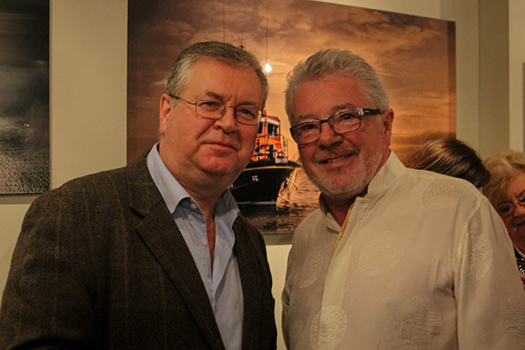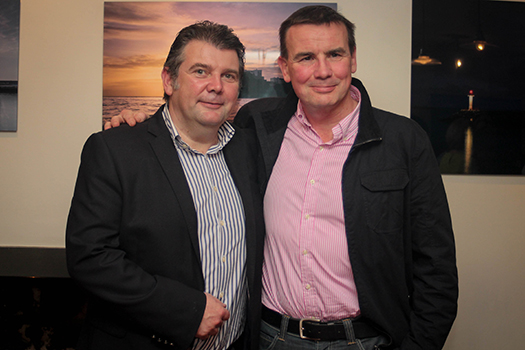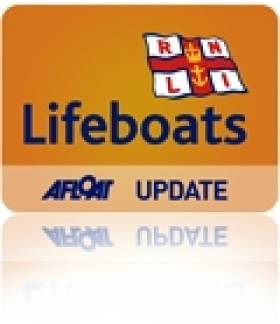Displaying items by tag: John McColgan
#rnli – On Monday broadcaster Gay Byrne officially opened the Howth Horizons exhibition of photographs taken by John McColgan, the multi-award winning director and producer of Riverdance. The exhibition runs until 20th April at The House restaurant in Howth. All proceeds from the sale of the photographs will go to Howth RNLI.
John McColgan commented,'Photography is a long-held passion of mine. This is my first photographic exhibition, and I feel deeply gratified and grateful for the positive response I've received for my work. I knew that my family and friends would be supportive, and it means a lot that others appreciate the images I've created too. I'm delighted that the sale of the photographs will benefit Howth's lifeboat crew in their efforts to save lives at sea.'
McColgan was joined by friends and family to celebrate the opening of the exhibition, including his partner Moya Doherty, Gay Byrne, Kathleen Watkins, Ian Dempsey, Joe Duffy, Gary Cooke, Eamonn Quinn and Karla Elliot.
Opening the exhibition, Gay Byrne talked about his happiness at being back in Howth where he had lived for 35 years and said, 'Nobody who lives in a fishing village anywhere in Ireland can have anything other than huge admiration and pride in the people who run the lifeboats. There is a memorial on the pier to those who sadly lost their lives at sea, but there is no list of all the many people rescued who owe their lives to those who man the lifeboats. When myself and Kathleen lived here we often heard the impressive sound of the lifeboat going out on exercise or on a rescue.'
A keen photographer himself, Byrne also praised McColgan's talent as a photographer saying,' John has taken photography to the next stage. He has the eye of a true artist, he has the ability to see things in a different way. You don't have to travel very far to capture beautiful pictures if you have the ability and the creativity.'

Joe Duffy and John McColgan

David and Terry Boyle

Stephen Harris, Russell Rafter and Fred Connolly
Rose Michael, Howth RNLI Fundraising Chairperson said, 'We are honoured that someone of John's calibre would choose to donate the proceeds of his very first photographic exhibition to Howth lifeboat. As a charity we are totally dependent on the generosity of people like John, to raise funds to pay for the continued training of our volunteer crew, their kit and the upkeep of our lifeboats. We greatly appreciate the time, thought and effort that has gone in to these beautiful photographs. We hope that they will be treasured and passed down through families as heirlooms for generations to come.'
For more information click here





























































